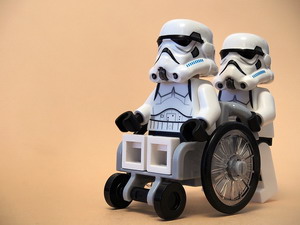 This last week I had a couple of patients who were not doing as well as I expected on their follow-up visit. With both, I had recommended using hot and cold on the inflamed area at least once each day. They had not done this. The 110-degree days may have had something to do with this as putting heat on your back on such already hot days is less pleasant than usual. Nevertheless, the minimal recovery they experienced was probably due to not using the hot and cold therapy as directed. So why is hot and cold important? When should we use just one and not the other? What about ice?
This last week I had a couple of patients who were not doing as well as I expected on their follow-up visit. With both, I had recommended using hot and cold on the inflamed area at least once each day. They had not done this. The 110-degree days may have had something to do with this as putting heat on your back on such already hot days is less pleasant than usual. Nevertheless, the minimal recovery they experienced was probably due to not using the hot and cold therapy as directed. So why is hot and cold important? When should we use just one and not the other? What about ice?
 Things get tweaked in your body every day. Typically this happens because of the misfiring of opposing muscles. It takes a tremendous amount of coordination of the feedback from all the muscles, ligaments, and tendons around a joint to make everything balance and counterbalance just right so that we can move in a smooth and purposeful manner. This coordination of inputs from the muscles and joints happens in the spinal cord and in several different areas of the brain. Simply raising your arm up involves a vastly complex number of messages running around in the brain and around the arm to accomplish this simple act. In the spine, that complexity is multiplied greatly as each joint complex can move in eight different directions. It does not take much for a glitch here and there to produce unbalanced movements that create little injuries to the muscles and joints. Those little injuries may be enough to cause pain or there may just be a general stiffness. That glitch may come from over-stretching an area in a sleeping position, missing a step, a lift that was heavier than you expected, a poor head position at work, a little too much pickleball, and so on. Life happens.
Things get tweaked in your body every day. Typically this happens because of the misfiring of opposing muscles. It takes a tremendous amount of coordination of the feedback from all the muscles, ligaments, and tendons around a joint to make everything balance and counterbalance just right so that we can move in a smooth and purposeful manner. This coordination of inputs from the muscles and joints happens in the spinal cord and in several different areas of the brain. Simply raising your arm up involves a vastly complex number of messages running around in the brain and around the arm to accomplish this simple act. In the spine, that complexity is multiplied greatly as each joint complex can move in eight different directions. It does not take much for a glitch here and there to produce unbalanced movements that create little injuries to the muscles and joints. Those little injuries may be enough to cause pain or there may just be a general stiffness. That glitch may come from over-stretching an area in a sleeping position, missing a step, a lift that was heavier than you expected, a poor head position at work, a little too much pickleball, and so on. Life happens.
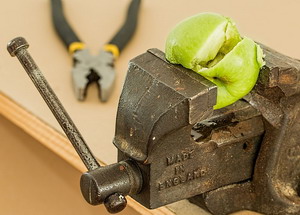 If the glitch strained the muscles or sprained the supporting ligaments then actual tissue damage has occurred which will trigger the pain pathways. If no strain or sprain occurs but you can feel the discomfort, then the body protectively tightens the muscles to limit motion and prevent injury. In the strain/sprain scenario the same protective muscle tightening usually also occurs. The tight muscles will compress the blood vessels in the area decreasing blood flow. The resulting lack of oxygen will trigger a different pain pathway. This tightness also typically inhibits the flow of lymphatic fluid in the area. This lymph stasis causes what we will notice as swelling in the painful area. The joints also have a fibrous capsule around them which can be injured and the capsule can swell. This is especially relevant in the spine as the swelling of the capsule can put pressure directly on nerve roots exiting the spine. When you get tingling or pain that travels down and arm or leg, this is usually what has happened.
If the glitch strained the muscles or sprained the supporting ligaments then actual tissue damage has occurred which will trigger the pain pathways. If no strain or sprain occurs but you can feel the discomfort, then the body protectively tightens the muscles to limit motion and prevent injury. In the strain/sprain scenario the same protective muscle tightening usually also occurs. The tight muscles will compress the blood vessels in the area decreasing blood flow. The resulting lack of oxygen will trigger a different pain pathway. This tightness also typically inhibits the flow of lymphatic fluid in the area. This lymph stasis causes what we will notice as swelling in the painful area. The joints also have a fibrous capsule around them which can be injured and the capsule can swell. This is especially relevant in the spine as the swelling of the capsule can put pressure directly on nerve roots exiting the spine. When you get tingling or pain that travels down and arm or leg, this is usually what has happened.
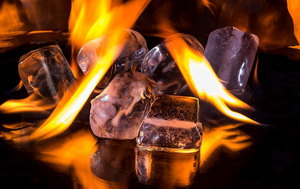 Okay, now you have a good picture of what is or can be going on when you feel a pain in your muscles or joints that happens suddenly from something you did or shows up overnight. Your first line of defense in these situations is either heat, cold, or both. Sometimes even ice is indicated. Let’s dig in a little deeper to understand what is best for what.
Okay, now you have a good picture of what is or can be going on when you feel a pain in your muscles or joints that happens suddenly from something you did or shows up overnight. Your first line of defense in these situations is either heat, cold, or both. Sometimes even ice is indicated. Let’s dig in a little deeper to understand what is best for what.
 Heat is for muscles. Heat causes the blood vessels to open up and increases circulation in the area treated. Improved circulation brings more oxygen to the muscles as well as nutrients necessary to heal any strain injuries. It also brings white blood cells to the area to eat up any damaged tissue and promote tissue regeneration. Heat promotes healing, and if there is pain from a lack of oxygen, it relieves that kind of pain. When blood vessels expand, they get leakier — this is both good and bad. The leaky is good for getting nutrients and white blood cells to the area. But leaky also means blood serum leaks into the injury site causing swelling. Swelling distorts the muscle attachments and causes the joint capsules to swell. This creates a new reason for pain and joint instability.
Heat is for muscles. Heat causes the blood vessels to open up and increases circulation in the area treated. Improved circulation brings more oxygen to the muscles as well as nutrients necessary to heal any strain injuries. It also brings white blood cells to the area to eat up any damaged tissue and promote tissue regeneration. Heat promotes healing, and if there is pain from a lack of oxygen, it relieves that kind of pain. When blood vessels expand, they get leakier — this is both good and bad. The leaky is good for getting nutrients and white blood cells to the area. But leaky also means blood serum leaks into the injury site causing swelling. Swelling distorts the muscle attachments and causes the joint capsules to swell. This creates a new reason for pain and joint instability.
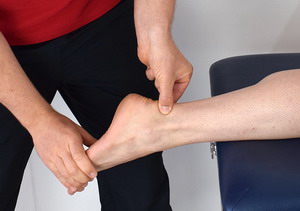 Cold is for joints, tendons, and ligaments. We use cold to chase away the excess fluid in an area. Cold contracts tissue and squeezes out the excess fluid. This helps to stabilize joints that were swollen which in turn improves normal motion in the area. Cold also is useful for reducing inflammation in muscles. This is why pro athletes will do an ice bath after a strenuous workout. However, we need to consider the difference between cold and ice in the context of the types of aches and pains we are considering that bring most people to my office.
Cold is for joints, tendons, and ligaments. We use cold to chase away the excess fluid in an area. Cold contracts tissue and squeezes out the excess fluid. This helps to stabilize joints that were swollen which in turn improves normal motion in the area. Cold also is useful for reducing inflammation in muscles. This is why pro athletes will do an ice bath after a strenuous workout. However, we need to consider the difference between cold and ice in the context of the types of aches and pains we are considering that bring most people to my office.
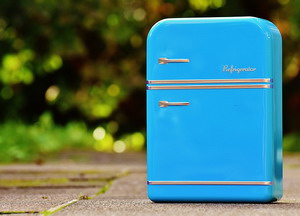 Cold means refrigerator-temperature cold gel packs. Ice obviously refers to the cold packs coming out of the freezer. For the patient population, I see we are using cold on a very small area, typically the neck or lower back. If you put cold on tight or spasming muscles, they will get even tighter due to the reduction of blood flow. Cold constricts the blood vessels. This is not what we want in the spine. There are seven layers of muscle on each side of the spine to control the complex movements and stabilizations required by the spine. We don’t need even more tightness in the area we are treating. We do however want the reduction of swelling cold provides, particularly in the joint capsules. I always suggest heat first to release the muscle tension in the area for 15 minutes. I then recommend immediately afterward using 15 minutes of cold to reverse any swelling caused by the heat and also decrease any swelling in the joints. Refrigerator level cold does this very nicely whereas ice would cause blood vessel constriction and bring back the muscle tightness – not what we want. This combination works especially well for the joints of the spine. A special note, nerves are only reactive to heat or cold in the first inch from the spine. Putting heat or cold on a nerve pain in an arm or leg is not useful.
Cold means refrigerator-temperature cold gel packs. Ice obviously refers to the cold packs coming out of the freezer. For the patient population, I see we are using cold on a very small area, typically the neck or lower back. If you put cold on tight or spasming muscles, they will get even tighter due to the reduction of blood flow. Cold constricts the blood vessels. This is not what we want in the spine. There are seven layers of muscle on each side of the spine to control the complex movements and stabilizations required by the spine. We don’t need even more tightness in the area we are treating. We do however want the reduction of swelling cold provides, particularly in the joint capsules. I always suggest heat first to release the muscle tension in the area for 15 minutes. I then recommend immediately afterward using 15 minutes of cold to reverse any swelling caused by the heat and also decrease any swelling in the joints. Refrigerator level cold does this very nicely whereas ice would cause blood vessel constriction and bring back the muscle tightness – not what we want. This combination works especially well for the joints of the spine. A special note, nerves are only reactive to heat or cold in the first inch from the spine. Putting heat or cold on a nerve pain in an arm or leg is not useful.
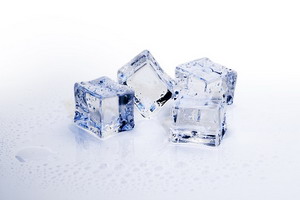 Ice level intensity as therapy is for a completely different set of conditions. In an acute injury like a sprained ankle, ice is the way to go. You have tissues that are badly enough torn that there may be internal bleeding. This is bad, so we want to stop it with ice causing constriction of blood vessels. Bruising makes healing take a lot longer because all those blood cells have to be broken down and carried away. While they are there they get in the way of the healing process trying to take place. So big joint injuries like the ankle, knee, shoulder, elbow, and wrist prefer ice therapy right after an injury. Any time bleeding into the tissues is involved, ice is the therapy of choice. You may only want to use heat after a couple of weeks to speed healing after the blood issues are resolved.
Ice level intensity as therapy is for a completely different set of conditions. In an acute injury like a sprained ankle, ice is the way to go. You have tissues that are badly enough torn that there may be internal bleeding. This is bad, so we want to stop it with ice causing constriction of blood vessels. Bruising makes healing take a lot longer because all those blood cells have to be broken down and carried away. While they are there they get in the way of the healing process trying to take place. So big joint injuries like the ankle, knee, shoulder, elbow, and wrist prefer ice therapy right after an injury. Any time bleeding into the tissues is involved, ice is the therapy of choice. You may only want to use heat after a couple of weeks to speed healing after the blood issues are resolved.
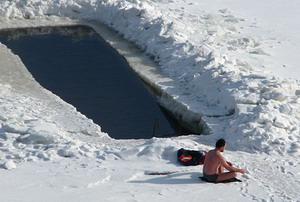 Another level of ice therapy is reducing systemic inflammation through full-body ice bath immersion for 10 to 12 minutes or using a super cold air chamber for just a couple of minutes. This intense cold exposure to the full body triggers a survival reaction with the production of something called cold shock proteins. These guys have all sorts of positive benefits for the body. Reducing pain and inflammation is just a small part of the good results. I have a couple of patients right now who are using this and getting great results.
Another level of ice therapy is reducing systemic inflammation through full-body ice bath immersion for 10 to 12 minutes or using a super cold air chamber for just a couple of minutes. This intense cold exposure to the full body triggers a survival reaction with the production of something called cold shock proteins. These guys have all sorts of positive benefits for the body. Reducing pain and inflammation is just a small part of the good results. I have a couple of patients right now who are using this and getting great results.
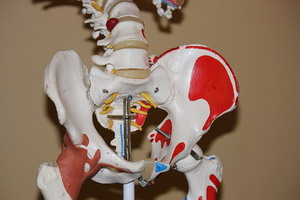 A side note about heat and cold therapy is that it only penetrates at max about an inch into the body. So heat and cold are not much use for a really deep joint like a hip. However, ice is useful in treating the surface tenderness caused by an inflamed hip trochanter bursa; the lubricating sack under the IT band where it crosses over the outer hip bone. The same is true for the bursa under the IT band just below the outer knee joint.
A side note about heat and cold therapy is that it only penetrates at max about an inch into the body. So heat and cold are not much use for a really deep joint like a hip. However, ice is useful in treating the surface tenderness caused by an inflamed hip trochanter bursa; the lubricating sack under the IT band where it crosses over the outer hip bone. The same is true for the bursa under the IT band just below the outer knee joint.
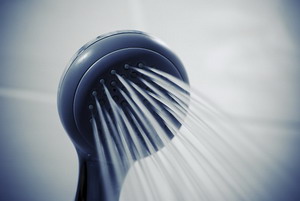 Different conditions need different therapies. Acute injuries of big joints require frequent ice massage to reduce swelling and bruising. As these conditions move into the longer healing stage then heat can also be useful. For spine conditions I have always found the combination of 15 minutes of heat from a hot shower or heating pad immediately followed by 15 minutes of a refrigerator cold pack creates the best results. If there is any radiating pain down a leg or arm, you want to repeat this therapy several times during the day. For sore muscles, some folks find heat does best and others find cold does best. For systemic inflammation, there is the option of full-body immersion in an ice bath or a freeze room. These therapies can be used any time something hurts. I recommend trying heat and/or cold before even calling for an appointment. A little heat and cold and a good night’s rest will often resolve a condition without an office visit.Take care,
Different conditions need different therapies. Acute injuries of big joints require frequent ice massage to reduce swelling and bruising. As these conditions move into the longer healing stage then heat can also be useful. For spine conditions I have always found the combination of 15 minutes of heat from a hot shower or heating pad immediately followed by 15 minutes of a refrigerator cold pack creates the best results. If there is any radiating pain down a leg or arm, you want to repeat this therapy several times during the day. For sore muscles, some folks find heat does best and others find cold does best. For systemic inflammation, there is the option of full-body immersion in an ice bath or a freeze room. These therapies can be used any time something hurts. I recommend trying heat and/or cold before even calling for an appointment. A little heat and cold and a good night’s rest will often resolve a condition without an office visit.Take care,
David
Ellen 
Ellen started on a new adventure last week, facial rejuvenation. I found an interesting video on micro-infusion facial therapy to stimulate new collagen formation under the skin being treated. This is a step up from the old acupuncture protocol of banding 20 to 30 needles together and stamping the skin of the face to produce thousands of tiny punctures into the dermal layer of the skin. The old technique works quite well as the slightly injured dermal layer responds by producing more collagen to repair the tissue. This new technique is similar except instead of acupuncture needles they use gold plated micro hypodermic needles that injects tiny amounts of a skin growth factor into the spot. The needles only penetrate 0.5 mm (1/50th of an inch) into the skin. So far things look good. She repeats this every 2 weeks for several months.
 Hookworms prevent diabetes
Hookworms prevent diabetes
 Simple mouth rinse test for heart disease risk?
Simple mouth rinse test for heart disease risk?
 Intermittent fasting helps Alzheimer’s
Intermittent fasting helps Alzheimer’s

 This last week I had a couple of patients who were not doing as well as I expected on their follow-up visit. With both, I had recommended using hot and cold on the inflamed area at least once each day. They had not done this. The 110-degree days may have had something to do with this as putting heat on your back on such already hot days is less pleasant than usual. Nevertheless, the minimal recovery they experienced was probably due to not using the hot and cold therapy as directed. So why is hot and cold important? When should we use just one and not the other? What about ice?
This last week I had a couple of patients who were not doing as well as I expected on their follow-up visit. With both, I had recommended using hot and cold on the inflamed area at least once each day. They had not done this. The 110-degree days may have had something to do with this as putting heat on your back on such already hot days is less pleasant than usual. Nevertheless, the minimal recovery they experienced was probably due to not using the hot and cold therapy as directed. So why is hot and cold important? When should we use just one and not the other? What about ice? Things get tweaked in your body every day. Typically this happens because of the misfiring of opposing muscles. It takes a tremendous amount of coordination of the feedback from all the muscles, ligaments, and tendons around a joint to make everything balance and counterbalance just right so that we can move in a smooth and purposeful manner. This coordination of inputs from the muscles and joints happens in the spinal cord and in several different areas of the brain. Simply raising your arm up involves a vastly complex number of messages running around in the brain and around the arm to accomplish this simple act. In the spine, that complexity is multiplied greatly as each joint complex can move in eight different directions. It does not take much for a glitch here and there to produce unbalanced movements that create little injuries to the muscles and joints. Those little injuries may be enough to cause pain or there may just be a general stiffness. That glitch may come from over-stretching an area in a sleeping position, missing a step, a lift that was heavier than you expected, a poor head position at work, a little too much pickleball, and so on. Life happens.
Things get tweaked in your body every day. Typically this happens because of the misfiring of opposing muscles. It takes a tremendous amount of coordination of the feedback from all the muscles, ligaments, and tendons around a joint to make everything balance and counterbalance just right so that we can move in a smooth and purposeful manner. This coordination of inputs from the muscles and joints happens in the spinal cord and in several different areas of the brain. Simply raising your arm up involves a vastly complex number of messages running around in the brain and around the arm to accomplish this simple act. In the spine, that complexity is multiplied greatly as each joint complex can move in eight different directions. It does not take much for a glitch here and there to produce unbalanced movements that create little injuries to the muscles and joints. Those little injuries may be enough to cause pain or there may just be a general stiffness. That glitch may come from over-stretching an area in a sleeping position, missing a step, a lift that was heavier than you expected, a poor head position at work, a little too much pickleball, and so on. Life happens. If the glitch strained the muscles or sprained the supporting ligaments then actual tissue damage has occurred which will trigger the pain pathways. If no strain or sprain occurs but you can feel the discomfort, then the body protectively tightens the muscles to limit motion and prevent injury. In the strain/sprain scenario the same protective muscle tightening usually also occurs. The tight muscles will compress the blood vessels in the area decreasing blood flow. The resulting lack of oxygen will trigger a different pain pathway. This tightness also typically inhibits the flow of lymphatic fluid in the area. This lymph stasis causes what we will notice as swelling in the painful area. The joints also have a fibrous capsule around them which can be injured and the capsule can swell. This is especially relevant in the spine as the swelling of the capsule can put pressure directly on nerve roots exiting the spine. When you get tingling or pain that travels down and arm or leg, this is usually what has happened.
If the glitch strained the muscles or sprained the supporting ligaments then actual tissue damage has occurred which will trigger the pain pathways. If no strain or sprain occurs but you can feel the discomfort, then the body protectively tightens the muscles to limit motion and prevent injury. In the strain/sprain scenario the same protective muscle tightening usually also occurs. The tight muscles will compress the blood vessels in the area decreasing blood flow. The resulting lack of oxygen will trigger a different pain pathway. This tightness also typically inhibits the flow of lymphatic fluid in the area. This lymph stasis causes what we will notice as swelling in the painful area. The joints also have a fibrous capsule around them which can be injured and the capsule can swell. This is especially relevant in the spine as the swelling of the capsule can put pressure directly on nerve roots exiting the spine. When you get tingling or pain that travels down and arm or leg, this is usually what has happened. Okay, now you have a good picture of what is or can be going on when you feel a pain in your muscles or joints that happens suddenly from something you did or shows up overnight. Your first line of defense in these situations is either heat, cold, or both. Sometimes even ice is indicated. Let’s dig in a little deeper to understand what is best for what.
Okay, now you have a good picture of what is or can be going on when you feel a pain in your muscles or joints that happens suddenly from something you did or shows up overnight. Your first line of defense in these situations is either heat, cold, or both. Sometimes even ice is indicated. Let’s dig in a little deeper to understand what is best for what. Heat is for muscles. Heat causes the blood vessels to open up and increases circulation in the area treated. Improved circulation brings more oxygen to the muscles as well as nutrients necessary to heal any strain injuries. It also brings white blood cells to the area to eat up any damaged tissue and promote tissue regeneration. Heat promotes healing, and if there is pain from a lack of oxygen, it relieves that kind of pain. When blood vessels expand, they get leakier — this is both good and bad. The leaky is good for getting nutrients and white blood cells to the area. But leaky also means blood serum leaks into the injury site causing swelling. Swelling distorts the muscle attachments and causes the joint capsules to swell. This creates a new reason for pain and joint instability.
Heat is for muscles. Heat causes the blood vessels to open up and increases circulation in the area treated. Improved circulation brings more oxygen to the muscles as well as nutrients necessary to heal any strain injuries. It also brings white blood cells to the area to eat up any damaged tissue and promote tissue regeneration. Heat promotes healing, and if there is pain from a lack of oxygen, it relieves that kind of pain. When blood vessels expand, they get leakier — this is both good and bad. The leaky is good for getting nutrients and white blood cells to the area. But leaky also means blood serum leaks into the injury site causing swelling. Swelling distorts the muscle attachments and causes the joint capsules to swell. This creates a new reason for pain and joint instability. Cold is for joints, tendons, and ligaments. We use cold to chase away the excess fluid in an area. Cold contracts tissue and squeezes out the excess fluid. This helps to stabilize joints that were swollen which in turn improves normal motion in the area. Cold also is useful for reducing inflammation in muscles. This is why pro athletes will do an ice bath after a strenuous workout. However, we need to consider the difference between cold and ice in the context of the types of aches and pains we are considering that bring most people to my office.
Cold is for joints, tendons, and ligaments. We use cold to chase away the excess fluid in an area. Cold contracts tissue and squeezes out the excess fluid. This helps to stabilize joints that were swollen which in turn improves normal motion in the area. Cold also is useful for reducing inflammation in muscles. This is why pro athletes will do an ice bath after a strenuous workout. However, we need to consider the difference between cold and ice in the context of the types of aches and pains we are considering that bring most people to my office. Cold means refrigerator-temperature cold gel packs. Ice obviously refers to the cold packs coming out of the freezer. For the patient population, I see we are using cold on a very small area, typically the neck or lower back. If you put cold on tight or spasming muscles, they will get even tighter due to the reduction of blood flow. Cold constricts the blood vessels. This is not what we want in the spine. There are seven layers of muscle on each side of the spine to control the complex movements and stabilizations required by the spine. We don’t need even more tightness in the area we are treating. We do however want the reduction of swelling cold provides, particularly in the joint capsules. I always suggest heat first to release the muscle tension in the area for 15 minutes. I then recommend immediately afterward using 15 minutes of cold to reverse any swelling caused by the heat and also decrease any swelling in the joints. Refrigerator level cold does this very nicely whereas ice would cause blood vessel constriction and bring back the muscle tightness – not what we want. This combination works especially well for the joints of the spine. A special note, nerves are only reactive to heat or cold in the first inch from the spine. Putting heat or cold on a nerve pain in an arm or leg is not useful.
Cold means refrigerator-temperature cold gel packs. Ice obviously refers to the cold packs coming out of the freezer. For the patient population, I see we are using cold on a very small area, typically the neck or lower back. If you put cold on tight or spasming muscles, they will get even tighter due to the reduction of blood flow. Cold constricts the blood vessels. This is not what we want in the spine. There are seven layers of muscle on each side of the spine to control the complex movements and stabilizations required by the spine. We don’t need even more tightness in the area we are treating. We do however want the reduction of swelling cold provides, particularly in the joint capsules. I always suggest heat first to release the muscle tension in the area for 15 minutes. I then recommend immediately afterward using 15 minutes of cold to reverse any swelling caused by the heat and also decrease any swelling in the joints. Refrigerator level cold does this very nicely whereas ice would cause blood vessel constriction and bring back the muscle tightness – not what we want. This combination works especially well for the joints of the spine. A special note, nerves are only reactive to heat or cold in the first inch from the spine. Putting heat or cold on a nerve pain in an arm or leg is not useful. Ice level intensity as therapy is for a completely different set of conditions. In an acute injury like a sprained ankle, ice is the way to go. You have tissues that are badly enough torn that there may be internal bleeding. This is bad, so we want to stop it with ice causing constriction of blood vessels. Bruising makes healing take a lot longer because all those blood cells have to be broken down and carried away. While they are there they get in the way of the healing process trying to take place. So big joint injuries like the ankle, knee, shoulder, elbow, and wrist prefer ice therapy right after an injury. Any time bleeding into the tissues is involved, ice is the therapy of choice. You may only want to use heat after a couple of weeks to speed healing after the blood issues are resolved.
Ice level intensity as therapy is for a completely different set of conditions. In an acute injury like a sprained ankle, ice is the way to go. You have tissues that are badly enough torn that there may be internal bleeding. This is bad, so we want to stop it with ice causing constriction of blood vessels. Bruising makes healing take a lot longer because all those blood cells have to be broken down and carried away. While they are there they get in the way of the healing process trying to take place. So big joint injuries like the ankle, knee, shoulder, elbow, and wrist prefer ice therapy right after an injury. Any time bleeding into the tissues is involved, ice is the therapy of choice. You may only want to use heat after a couple of weeks to speed healing after the blood issues are resolved. Another level of ice therapy is reducing systemic inflammation through full-body ice bath immersion for 10 to 12 minutes or using a super cold air chamber for just a couple of minutes. This intense cold exposure to the full body triggers a survival reaction with the production of something called cold shock proteins. These guys have all sorts of positive benefits for the body. Reducing pain and inflammation is just a small part of the good results. I have a couple of patients right now who are using this and getting great results.
Another level of ice therapy is reducing systemic inflammation through full-body ice bath immersion for 10 to 12 minutes or using a super cold air chamber for just a couple of minutes. This intense cold exposure to the full body triggers a survival reaction with the production of something called cold shock proteins. These guys have all sorts of positive benefits for the body. Reducing pain and inflammation is just a small part of the good results. I have a couple of patients right now who are using this and getting great results. A side note about heat and cold therapy is that it only penetrates at max about an inch into the body. So heat and cold are not much use for a really deep joint like a hip. However, ice is useful in treating the surface tenderness caused by an inflamed hip trochanter bursa; the lubricating sack under the IT band where it crosses over the outer hip bone. The same is true for the bursa under the IT band just below the outer knee joint.
A side note about heat and cold therapy is that it only penetrates at max about an inch into the body. So heat and cold are not much use for a really deep joint like a hip. However, ice is useful in treating the surface tenderness caused by an inflamed hip trochanter bursa; the lubricating sack under the IT band where it crosses over the outer hip bone. The same is true for the bursa under the IT band just below the outer knee joint. Different conditions need different therapies. Acute injuries of big joints require frequent ice massage to reduce swelling and bruising. As these conditions move into the longer healing stage then heat can also be useful. For spine conditions I have always found the combination of 15 minutes of heat from a hot shower or heating pad immediately followed by 15 minutes of a refrigerator cold pack creates the best results. If there is any radiating pain down a leg or arm, you want to repeat this therapy several times during the day. For sore muscles, some folks find heat does best and others find cold does best. For systemic inflammation, there is the option of full-body immersion in an ice bath or a freeze room. These therapies can be used any time something hurts. I recommend trying heat and/or cold before even calling for an appointment. A little heat and cold and a good night’s rest will often resolve a condition without an office visit.Take care,
Different conditions need different therapies. Acute injuries of big joints require frequent ice massage to reduce swelling and bruising. As these conditions move into the longer healing stage then heat can also be useful. For spine conditions I have always found the combination of 15 minutes of heat from a hot shower or heating pad immediately followed by 15 minutes of a refrigerator cold pack creates the best results. If there is any radiating pain down a leg or arm, you want to repeat this therapy several times during the day. For sore muscles, some folks find heat does best and others find cold does best. For systemic inflammation, there is the option of full-body immersion in an ice bath or a freeze room. These therapies can be used any time something hurts. I recommend trying heat and/or cold before even calling for an appointment. A little heat and cold and a good night’s rest will often resolve a condition without an office visit.Take care,